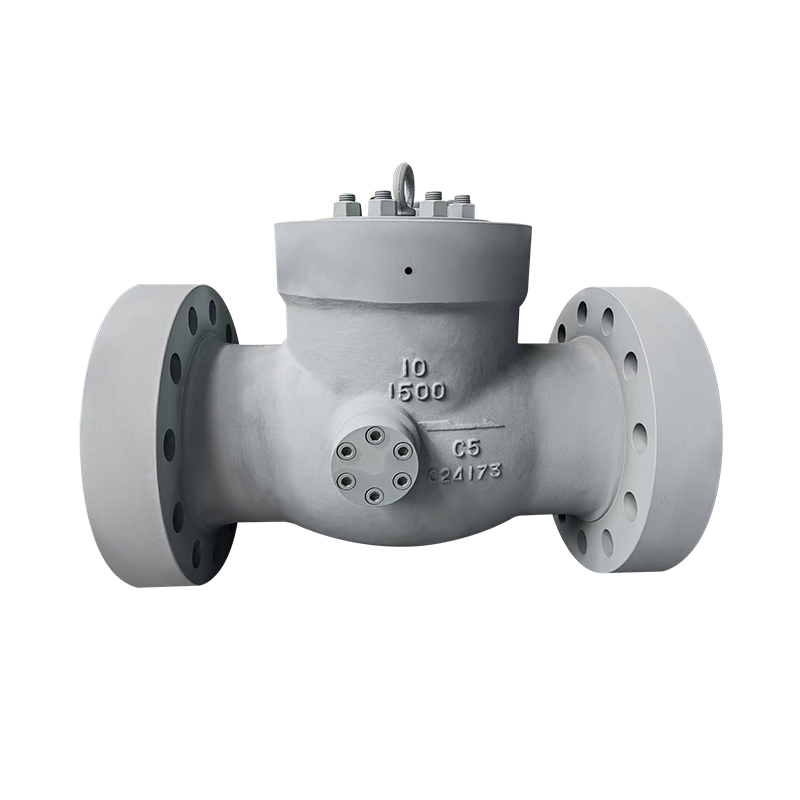
Choosing the right valve type and understanding its material composition and installation procedure helps ensure system reliability and efficiency. This article discusses three key aspects: the material chemical composition of a cast steel flanged check valve, the function and design of the globe style check valve, and the installation of threaded gate valves. Each section highlights important points while following practical, straightforward logic based on commonly accepted industry knowledge.

The cast steel flanged check valve is widely used in industrial applications due to its strength, resistance to high pressure, and general suitability for handling various fluids. Its material chemical composition plays a key role in defining its performance and durability.
Cast steel typically refers to carbon steel castings that follow ASTM A216 (for WCB grade), among other specifications. The typical chemical composition includes:
Carbon (C): 0.25%–0.30%. This element contributes to the valve's strength but must be controlled to avoid brittleness.
Manganese (Mn): 0.60%–1.00%. Manganese improves strength and resistance to wear.
Silicon (Si): 0.15%–0.40%. Helps in deoxidizing steel and adds to overall toughness.
Phosphorus (P) and Sulfur (S): Kept below 0.05%. Higher levels may reduce ductility and impact strength.
Trace elements: Depending on application, small amounts of chromium, molybdenum, or nickel may be added to enhance corrosion resistance or high-temperature strength.
The flanged ends, compatible with ANSI or DIN standards, ensure secure and leak-resistant connections in pipeline systems. The durability of the cast steel flanged check valve largely depends on this carefully balanced chemical composition, making it suitable for water, steam, oil, and gas pipelines in a wide range of temperatures and pressures.
The globe style check valve is a non-return valve that operates using the same body design as a globe valve but functions automatically to allow flow in one direction while preventing reverse flow. It is suitable for moderate to high-pressure systems and is valued for its reliable sealing and compact structure.
In this valve type, flow lifts a disc from the seat, allowing fluid to pass. When flow stops or reverses, gravity and backpressure return the disc to the seat, closing the valve. The body has a partitioned structure, similar to that of globe valves, which provides a shorter stroke and quicker response compared to swing check valves.
Advantages include:
Improved sealing performance: The seating surface is generally engineered for tight closure, leakage under backflow conditions.
Compact design: Globe style check valves often take up less space than swing check valves, making them easier to install in tight layouts.
Versatile mounting positions: They can typically be installed in horizontal or vertical (upward flow) pipe runs.
Applications include boiler feedwater systems, chemical processing lines, and compressed air systems. These valves are especially preferred in systems where backflow could damage pumps or other equipment. Their straightforward operation without external actuation makes globe style check valves dependable and low-maintenance under normal conditions.
The threaded gate valve is a commonly used valve for on/off service in low to medium-pressure pipelines. Its threaded ends (often NPT or BSP) make it suitable for smaller diameter piping systems where welding or flanging is not necessary. Proper installation of a threaded gate valve ensures leak-free performance and long service life.
Installation guidelines:
Inspect threads and clean surfaces: Before installation, both the internal and external threads must be checked for damage and cleaned of dirt or debris to ensure a proper seal.
Use appropriate thread sealant: Apply PTFE tape or approved thread sealant evenly on the male threads. Avoid overuse, as excess material may enter the valve or restrict flow.
Hand-tighten: Start threading the valve onto the pipe manually to ensure correct alignment. Misaligned threads may cause leaks or mechanical damage.
Use a wrench carefully: Tighten the valve with a wrench on the body's designated flat surfaces. Never apply torque to the valve handle or stem to avoid damaging the internal components.

